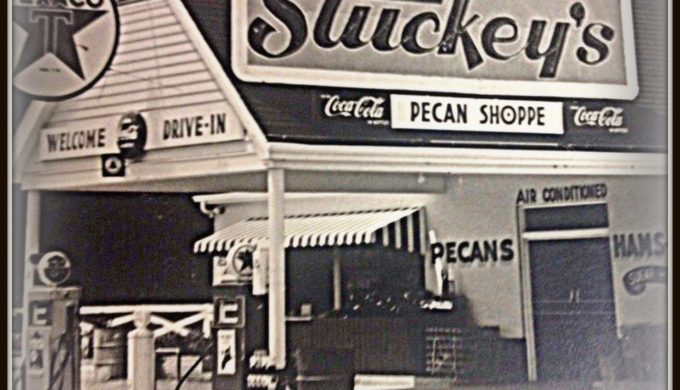If you live in Texas, you know about the travel center Buc-ee’s, but do you remember stopping at a Stuckey’s as a kid? Down south (no, not South Texas, but the deep south of the United States on U.S. Route 23), Stuckey’s was part of the landscape. Part of Route 23 had another name: Dixie Highway. If you were in Mackinaw City, Michigan and wanted to go south to Jacksonville, Florida, you’d travel through “Dixie.” Trekking that highway years ago, you’d probably stop at a Stuckey’s Convenience Store. Stuckey’s with the blue tin roof was an expected roadside pleasure-stop. The chain started in Georgia, but Texas had them, too.
The homey, clean, charming place isn’t quite as famous as it used to be, but there are still over a hundred locations nationwide with several in the Lone Star State. So, how did Stuckey’s come to be and what happened to it over the years? Here’s the story!
Facebook/Stuckey’s
The man who started it all was W.S. Stuckey, Sr. He was looking for ways to support his family during the Great Depression. While Stuckey and his young family lived in Georgia, he couldn’t find a job, but someone suggested he sell pecans. Stuckey didn’t have much money, but he had pecans, and he began buying and selling them to travelers. In 1936, he set up a stand on the well-traveled US 23, Dixie highway in Georgia. Travelers bought the shelled and unshelled pecans. His wife Ethel made delicious candies in her kitchen and added the goodies to his little stand by the road.
In 1937, Stuckey opened his first real store in Eastman, Georgia, to sell foodstuffs. Stuckey was one of the original entrepreneurs to recognize the advantage of convenience sales. As an example, another major corporation, the Southland Ice Company opened stores in 1946. They became known as 7-Elevens, but Stuckey and his enterprise grew to include restaurants with candies, gifts, and gasoline some ten years earlier than the 7-Elevens. Back in those early days, kids traveling from Florida to Georgia were delighted to see the blue tin roofs of Stuckey’s come into view. That meant a restroom break and a snack.
Facebook/Stuckey’s
All those candies required sugar. Uh-oh! World War II came along, and the war brought sugar rationing. People couldn’t travel, either. Tires were rationed. Stuckey closed all his stores except for one, the original in Eastman, Georgia. However, due to his famous candies, the government commissioned the sweets for the military during the war years.
After the war, Stuckey rebuilt his business to include over 100 stores, and in 1964 he decided to sell his business to Pet Milk, Inc. Giant corporations often take away family personalities and values, and the old, familiar Stuckey’s got lost in the shuffle of big business.
Facebook/Stuckey’s
Stuckey Sr. died in 1977. Shortly after his dad’s death, William S. Stuckey Jr. and his partners bought back the company. These Stuckey’s is often branded with Dairy Queen and McDonald’s in an Express Stop concept. And if you’re really lucky, you’ll find a few stand-alone stores. Ah, the memories.





